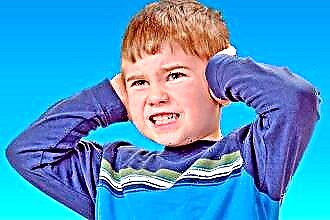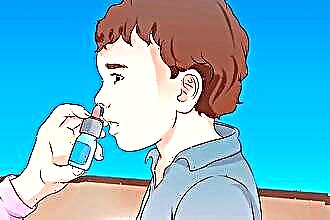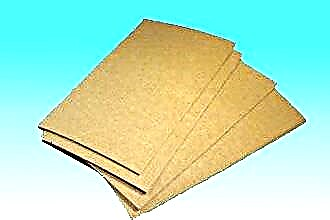A nasal congestion in a child is not just a lack of nasal breathing, but a high risk of complications. Insufficient oxygen supply to the respiratory tract limits its delivery to the internal organs. The nervous system is the most sensitive to hypoxia, which can manifest itself as mental retardation. What to do if a child has a stuffy nose?
 The reasons due to which a child's nose is clogged are quite varied. Accordingly, the treatment tactics also have some differences. First, let's list what can interfere with nasal breathing?
The reasons due to which a child's nose is clogged are quite varied. Accordingly, the treatment tactics also have some differences. First, let's list what can interfere with nasal breathing?
- physiological rhinitis;
- allergy;
- sinusitis;
- adenoids;
- vasomotor rhinitis.
If the child's nose is not breathing, this is also facilitated by:
- dryness, air pollution;
- ARVI;
- curvature of the septum, anatomically narrow passages;
- traumatic changes in the structure of the nasopharynx;
- frequent colds on the background of immunodeficiency.
It is necessary to treat nasal congestion in children taking into account the cause of the disease, therefore, we will consider in detail the most frequent provoking factors.
Physiological rhinitis
In a baby under one year old, the fight against nasal congestion is quite difficult, since the baby cannot blow his nose and clear the nasal passages on his own. In the first 2 months, the development of the nasal mucosa continues. After birth, she begins to contact with many irritating factors that are in the air, which is accompanied by tissue swelling.
In the process of intrauterine development, the baby was surrounded by amniotic fluid, but after birth it begins to be negatively affected by dust, microbes and an allergen. For the adaptation of the nasal mucosa, a certain period is required, and therefore, for 10 weeks, the baby has a very stuffy nose.
Symptoms
A physiological runny nose has no specific symptoms, so it is important for parents to distinguish it from a cold and help the baby get rid of nasal congestion. Before starting treatment, it is necessary to measure the temperature, pay attention to the color of nasal discharge, the presence of coughing, sneezing.
How does this condition manifest?
- difficult nasal breathing;
- sniffing;
- capriciousness;
- refusal to breastfeed, as babies cannot breathe through the nose during feeding;
- mucous discharge from the noses.
The task of parents is to prevent weight loss, so a spoon should be used for feeding.
Help for the baby
Physiological rhinitis does not require treatment; it can end on its own without the use of strong medications. The main therapeutic area is to relieve nasal breathing. For this it is recommended:
- increase the humidity in the nursery up to 65%. Special control over humidity is necessary when using central heating and air conditioning;
- reduce the temperature to 20 degrees;
- clean the air from allergens, dust by regular ventilation and daily wet cleaning;
- remove soft toys, carpets, books (anything that can accumulate dust) from the room;
- remove mucus from the nose with a saline solution such as Aqua Maris. Thanks to a special aspirator, you can clear mucus from the nasal passages, after which babies begin to breathe easier. Saline solutions are completely harmless and are approved for use from birth.
What is the danger of a physiological rhinitis?
With improper baby care and severe immunodeficiency, complications may develop:
- hypotrophy (weight loss). An insufficient supply of milk or formula slows down organ development. The baby quickly loses body weight, which is fraught with serious consequences;
 infection of ENT organs. With the accumulation of mucus, the process of reproduction of microbes is accelerated, which can be accompanied by sinusitis, tonsillitis or otitis media. Dust, allergens can linger in the snot, which is a breeding ground for bacteria;
infection of ENT organs. With the accumulation of mucus, the process of reproduction of microbes is accelerated, which can be accompanied by sinusitis, tonsillitis or otitis media. Dust, allergens can linger in the snot, which is a breeding ground for bacteria;- inflammation of the lower respiratory tract. On the one hand, the child has a clogged nose, so he can only breathe through his mouth. As a result, cold, untreated air penetrates directly into the trachea and bronchi. On the other hand, the baby is in a horizontal position most of the day, which predisposes the mucus to drain through the nasopharynx into the larynx and increases the risk of bronchitis and pneumonia.
Allergy
Over the past decades, the number of cases of allergies in childhood has increased significantly. For parents of a baby prone to frequent allergic reactions, it is important to know what provoking factors can cause allergies. This could be:
- pollen;
- sharp odors of household chemicals;
- hygiene products;
- wool;
- insect bite;
- food products (citrus fruits, chocolate, strawberries, seafood, dairy products, honey, eggs);
- medications;
- dust;
- congenital lactose, gluten intolerance.
Signs
In case of an allergic reaction, the following are observed:
- skin rashes of various colors, sizes and character. At the same time, the skin becomes dry, flaky, and with prolonged preservation of the rash, it can thicken. The rash is accompanied by itching, as a result of which sores, eczema, weeping wounds appear, which increases the risk of infection;
- swelling of certain areas, for example, lips, eyelids, cheeks. The swelling can spread to the neck, chest, and other parts of the body;
- lacrimation, itchy eyes, redness of the conjunctiva, as manifestations of allergic conjunctivitis;
- rhinorrhea. The discharge is clear, watery, which distinguishes allergies from infectious rhinitis. Edematous mucous membrane and a large volume of mucus completely close the nasal passage, due to which the child's nose is heavily stuffed up, and there is no breathing;
- frequent sneezing, as a result of irritation of the mucous membrane with allergens;
- cough, perspiration in the oropharynx. With edema of the laryngeal mucosa, hoarseness, barking cough and shortness of breath appear, which requires urgent therapy;
- disorder of the digestive function (colic, flatulence, rumbling, soreness in the abdomen, diarrhea, constipation, signs of dysbiosis).
Treatment rules
How to get rid of unpleasant allergy symptoms? To stop stuffing the nose, and to improve the general condition of the baby, it is necessary to eliminate the allergen.
The following groups of drugs have a healing effect:
| Drug group | Purpose of appointment | Drug name |
|---|---|---|
| Systemic antihistamines | To block the development of an allergic reaction, reduce symptoms | Erius, Zodak, Loratadin |
| Local antihistamines | To relieve congestion and ease nasal breathing | Delufen, Allergodil |
| Enzyme, choleretic, probiotics, prokinetics and others | Improves digestion, eliminates unpleasant symptoms | Espumisan, Linex, Mezim |
| Local hormonal | For severe allergies | Nazonex |
An integral addition to drug treatment is:
- climatotherapy, mud therapy, UFO;
- phytotherapy;
- hypoallergenic diet.
Sinusitis
With a nasal congestion in a child, sinusitis should be suspected. Causes of sinus inflammation include:
 improper treatment of allergic, infectious rhinitis;
improper treatment of allergic, infectious rhinitis;- diseases of the oral cavity (caries, stomatitis);
- chronic inflammation of the tonsils (tonsillitis, adenoiditis);
- infectious pathologies (measles, scarlet fever).
The chronic form of the disease develops with a prolonged violation of the outflow of mucus from the sinuses, as a result of which the child has a permanently stuffy nose.
Symptoms
In the acute form of sinusitis:
- nose is badly clogged;
- thick green mucus is released;
- worried about headache, aggravated by bending, sneezing, coughing;
- hyperthermia is recorded;
- there is pain in the points that are located above the inflamed sinuses. Painful sensations are associated with the accumulation of purulent secretions. In the supine position, its outflow improves, and the pain decreases somewhat;
- nasalness appears;
- sense of smell worsens;
- decreased appetite;
- there is moodiness, lethargy.
Features of therapy
How is nasal congestion treated? Therapy is prescribed taking into account the severity of the baby's condition and the stage of sinusitis. Often, treatment of nasal congestion in children with sinusitis includes:
- puncture of the maxillary sinuses. The doctor recommends making a puncture of the cavity to remove pus and sanitize it;
- the appointment of vasoconstrictor drugs (Lazorin, Evkazolin, Nazol) to reduce the swelling of the mucous membrane and ensure the outflow of purulent secretions. The drugs allow you to temporarily remove nasal congestion and restore nasal breathing;
- the use of antibacterial agents of systemic (Augmentin) and local action (Bioparox);
- use of NSAIDs such as ibuprofen. This remedy, which relieves inflammation, also normalizes the temperature and reduces the severity of pain.
After the completion of the acute stage, it is advisable to use physiotherapy procedures, for example, UHF.

Adenoids
In most cases, the child's nose does not breathe due to the adenoids. The disease affects babies under 7 years old, since at an older age, the lymphoid tissue of the nasopharyngeal tonsil gradually atrophies.
Causes
The formation of adenoids is predisposed by:
- frequent inflammatory diseases of the ENT organs;
- chronic sinusitis, tonsillitis;
- hereditary predisposition;
- tendency to allergies;
- unfavorable ecology;
- frequent colds, SARS.
Symptoms
The severity of symptoms depends on the degree of proliferation of lymphoid tissue. In the first degree, nasal congestion appears only in the supine position. The feeling that the nose is completely blocked appears in the second, third stage, when the amygdala blocks the lumen of the nasopharynx.
Among the clinical signs, it is worth highlighting:
- poor sleep;
- snoring, puffing;
- dry cough;
- nasalness;
- frequent exacerbations of chronic diseases of the ENT organs;
- hearing impairment;
- irritability, moodiness, lethargy.
A serious complication of adenoids is prolonged periods of sleep apnea, when the baby temporarily stops breathing.
Getting rid of adenoids
Therapeutic tactics depend on the condition of the little patient and the severity of the disease. How to relieve nasal congestion in a child? The medical method implies the appointment:
- nasal agents with a vasoconstrictor effect (Snoop, Sanorin);
- antihistamines (Fenistil, Suprastin);
- hormonal medications (Flix);
- antiseptics (Protargol);
- salt solutions (Dolphin, Aqualor);
- immunostimulants (Derinat).
From physiotherapeutic procedures, laser therapy, UHF, UFO, electrophoresis are used.
Vasomotor rhinitis
The development of vasomotor rhinitis is based on a disorder of the tone of the blood vessels. This is facilitated by:
 long-term use of drugs that have an effect on vascular tone (Nurofen, Otrivin);
long-term use of drugs that have an effect on vascular tone (Nurofen, Otrivin);- inhalation of dry, polluted air;
- frequent stress;
- diseases of the vascular, nervous system;
- congenital anomalies of the structure of the nasopharynx;
- hormonal fluctuations (in adolescence or with endocrine pathology);
- abuse of peppery, spicy food.
Symptoms
Clinical signs are presented:
- small amount of mucous discharge from the nose;
- sore throat;
- sneezing;
- nasalness;
- Difficulty nasal breathing on one side;
- deterioration of smell;
- headaches;
- poor appetite;
- increased sweating.
Therapy
How to cure a stuffy nose in a child? The first step is to establish the cause of the disease and eliminate the provoking factor. Drug therapy includes immunostimulants, vasoconstrictors, hormonal, salt and antiseptic drugs.
If the disease has become chronic, physiotherapeutic treatment is carried out using electrophoresis, UHF. In the absence of the effect of medications, destruction of local blood vessels is recommended. The dilated vessels are removed, after which the swelling of the mucous membrane of the nasal passages decreases and breathing is restored.
To strengthen the immune system, it is necessary to improve the baby's nutrition, normalize living conditions, harden and regularly take walks in the park. Also, do not forget about spa treatment and breathing exercises.

 infection of ENT organs. With the accumulation of mucus, the process of reproduction of microbes is accelerated, which can be accompanied by sinusitis, tonsillitis or otitis media. Dust, allergens can linger in the snot, which is a breeding ground for bacteria;
infection of ENT organs. With the accumulation of mucus, the process of reproduction of microbes is accelerated, which can be accompanied by sinusitis, tonsillitis or otitis media. Dust, allergens can linger in the snot, which is a breeding ground for bacteria; improper treatment of allergic, infectious rhinitis;
improper treatment of allergic, infectious rhinitis; long-term use of drugs that have an effect on vascular tone (Nurofen, Otrivin);
long-term use of drugs that have an effect on vascular tone (Nurofen, Otrivin);

